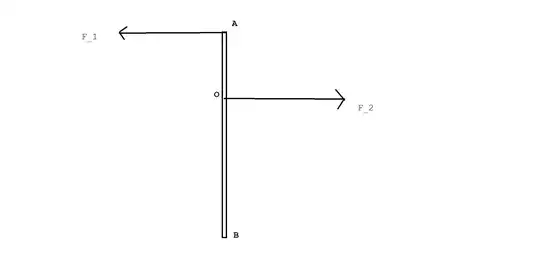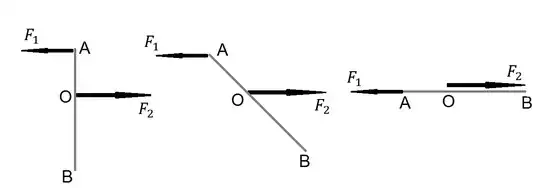 Suppose I have a rod in pure translation as shown in the picture with some constant acceleration. The two forces $F_1$ and $F_2$ act as shown. So clearly due to the definition of pure translation every point in the rod has the same velocity (say $\vec v$) so relative velocity of any point w.r.t to another point on the rod must be zero.
Suppose I have a rod in pure translation as shown in the picture with some constant acceleration. The two forces $F_1$ and $F_2$ act as shown. So clearly due to the definition of pure translation every point in the rod has the same velocity (say $\vec v$) so relative velocity of any point w.r.t to another point on the rod must be zero.
But, if I consider the net torque about $A$(or $O$), clearly, there is a non-zero torque due to $F_2$ ( or $F_1$ if you consider $O$) so clearly there must be some angular acceleration about that point. which would mean that the there is some non-zero relative velocity of other points on the rod about $A$(or $O$)
I don't understand what I'm getting wrong here.
And from what I read the rod must have no rotational motion only and only about the Centre of Mass. why is so ?
Please please explain to me clearly.
